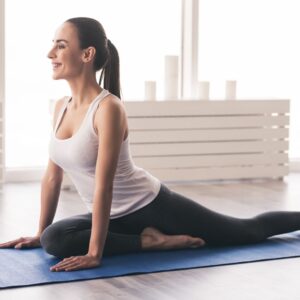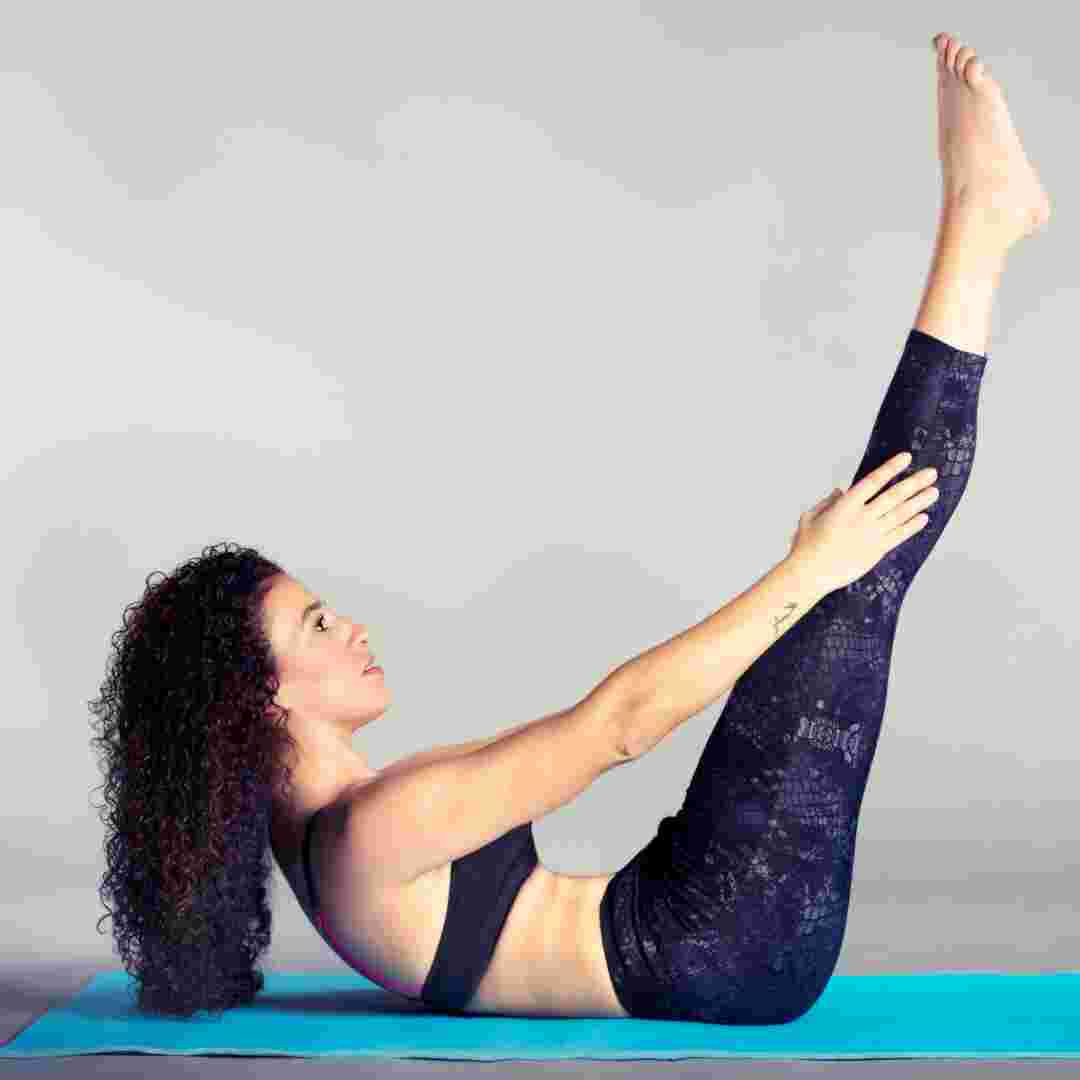Contents Table
Introduction
Truth About Pilates and Knee Pain
Modifying Pilates for Knee Injuries
Knee-Friendly Pilates Alternatives
Q&A
Conclusion
"Proficient Pilates is knee-friendly."
Introduction
Low-impact Pilates strengthens core muscles, improves flexibility, and aligns the body. If they have knee ailments or pain, some may ask if Pilates is bad for their knees. This article discusses if Pilates is healthy for your knees and how to avoid knee injuries during workouts.
Truth About Pilates and Knee Pain
Pilates, a century-old exercise, is popular. This low-impact workout strengthens core muscles, improves flexibility, and aligns the body. Pilates has been questioned for its knee effects. This article will reveal the truth about Pilates and knee discomfort.
First, most people can safely do Pilates. It is low-impact, thus it puts less stress on the joints than jogging or leaping. Pilates workouts require good form and alignment to prevent injury risk.
If done incorrectly or with a knee issue, Pilates can cause knee pain like other exercise. If done incorrectly, some Pilates movements bend or straighten the knee, putting pressure on it. Pilates routines may worsen knee injuries and arthritis.
Consult a doctor or teacher if Pilates causes knee pain. They can assist you find the reason of your pain and alter your Pilates practise to avoid it. They may advise you to avoid certain exercises or switch to a better one.
Proper form and posture during Pilates can lessen knee pain. This includes activating your core, keeping your spine neutral, and avoiding knee-paining movements. Remember to listen to your body and take rests. Stop exercising and rest if your knees hurt.
Modifying Pilates with blocks, straps, or cushions can also reduce knee problems. If lunges hurt your knee, use a pad or folded towel to relieve pressure. A block or strap might also help you balance during specific workouts.
Overall, Pilates is safe and helpful for most people. If done incorrectly or with a knee issue, it might cause knee pain. If you have knee pain doing Pilates, consult a competent instructor or healthcare expert to determine the cause and how to alter your practise. Focusing on perfect form, listening to your body, and using props to adapt exercises helps prevent knee pain and maximise Pilates benefits.
Modifying Pilates for Knee Injuries
Pilates is a popular exercise that strengthens core muscles, improves flexibility, and aligns the body. Pilates may worry some people, especially those with knee ailments or pain. We will discuss whether Pilates is dangerous for your knees and how to alter Pilates workouts for knee ailments in this article.
Pilates is a low-impact, joint-friendly exercise. Pilates uses controlled motions to increase joint mobility and stability without stressing the knees, unlike jogging or jumping. Some Pilates exercises can still damage the knees if done poorly or without modifications.
Most knee injuries involve a tear or strain of the anterior cruciate ligament (ACL), which joins the thigh and shin bones. Plyometric jumps and side lunges may strain the ACL and increase injury risk. Those with a history of ACL injuries or recovering from surgery should avoid or modify these activities to avoid further injury.
Pilates may worsen patellofemoral pain syndrome (PFPS), which causes front-knee pain. Since they impose strain on the patella, Pilates activities like the chair posture and single-leg squat may worsen PFPS symptoms. Modifying these exercises by minimising knee bend depth or using props like chairs or resistance bands can help prevent PFPS.
Before starting Pilates, visit a trained instructor or physical therapist if you have knee pain or a history of knee injury. They can identify exercises that may be contraindicated and suggest knee-friendly alternatives. They can also create a customised Pilates programme to meet your goals and reduce knee injury risk.
Many Pilates routines can be modified to be knee-friendly. You can limit the range of motion of deep knee bends or squats like the roll-up or spine stretch. A foam roller or yoga block can also support and relieve knee pressure. You can also strengthen knee muscles using clamshells or leg presses to increase knee stability and reduce injury risk.
Most people, including those with knee pain, can safely and effectively exercise with Pilates. If done incorrectly or without modifications, some Pilates exercises can damage the knees. By talking with a skilled Pilates instructor or physical therapist and modifying your Pilates programme, you can experience its benefits without knee damage.
Knee-Friendly Pilates Alternatives
Pilates, a century-old exercise, is popular. Known for improving flexibility, strength, and balance. Some question if Pilates hurts their knees. The answer is complicated and relies on knee health and Pilates routines. Alternatives to Pilates for knee-friendly workouts are discussed here.
Pilates can improve knee health if done properly. Core strengthening workouts like Pilates improve posture and reduce knee discomfort. Some Pilates routines might strain the knees, especially if the person has knee problems.
An option to Pilates for knee-friendly workouts is yoga. Yoga is low-impact and improves flexibility, strength, and balance. Stress reduction and mental health improvement are also its benefits. Downward-facing dog, warrior II, and tree postures strengthen legs and enhance knee health.
Swimming is another Pilates substitute. Swimming is a low-impact workout that boosts cardio, strength, and flexibility. It also reduces stress and boosts mental health. Swimming is good for knees since it puts little pressure on them.
Alternatives to Pilates for knee-friendly workouts include cycling. Cycling is low-impact and improves cardiovascular health, muscle strength, and flexibility. It also reduces stress and boosts mental health. Indoors on a stationary cycle or outside on a conventional bike.
Alternative knee-friendly routines to Pilates include strength training. Leg strengthening activities including squats, lunges, and leg lifts promote knee health. Start with small weights and gradually increase them to avoid knee stress.
Finally, walking improves cardiovascular health, muscle strength, and flexibility with its low-impact nature. It also reduces stress and boosts mental health. Indoor treadmill walking or outdoor walking is possible.
If done correctly, Pilates can improve knee health. Some Pilates routines might strain the knees, especially if the person has knee problems. Yoga, swimming, cycling, weight training, and walking all knee-friendly Pilates alternatives. Choose an exercise that's good for your knees and start slowly to build intensity. Always see a doctor before starting a new workout programme, especially if you have knee difficulties.

Q&A
1. Does Pilates hurt knees?
No, Pilates is a low-impact, knee-friendly activity.
2. Can Pilates hurt knees?
With good form and alignment, Pilates should not cause knee pain. Before starting Pilates, visit a doctor or alter workouts if you have knee injuries or problems.
3. Which Pilates movements should knee-problem sufferers avoid?
If you have knee difficulties, avoid or modify several Pilates exercises that put additional stress on the knees. Deep knee bends, lunges, and jumping/impact workouts are examples. Work with a trained Pilates instructor who can offer knee-protecting adjustments.
Conclusion
Conclusion: Low-impact Pilates is good for knees. Some Pilates exercises can stress the knees, especially if done poorly or if the person has knee problems. Consult a trained Pilates instructor and adapt workouts to avoid knee pain or injury.


